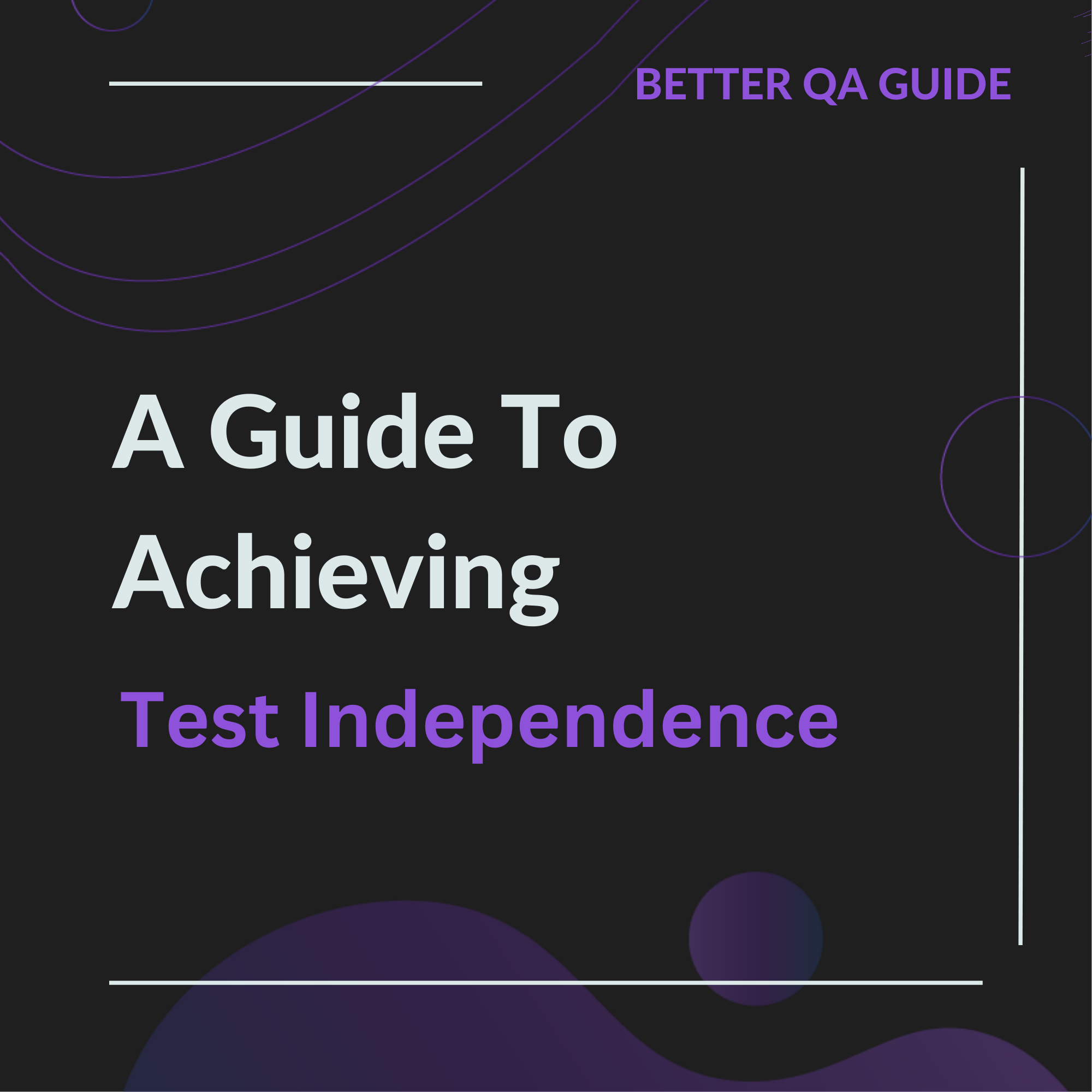Introduction
Test independence, a beacon for quality in software development, can often feel elusive to integrate into existing processes. But fear not; this narrative serves as your practical guide to conquering the challenges and achieving test independence within your team or organization.
In today’s article, we explore four steps leading up to achieving this type of testing, starting with understanding the barriers that hinder it, followed by practices, tools, and technologies, and lastly, encouraging community engagement for a thorough immersion into independence testing.
1. Understanding the Barriers to Test Independence
The first step is acknowledging the hurdles:
– Biases and blind spots: Developers, being human, may overlook their own software’s flaws. This bias can hinder comprehensive testing.
– Organizational culture: Sometimes, the culture may lean more towards developer-led testing, posing a significant challenge in implementing test independence.
– Resource constraints: Hiring independent testers or procuring necessary tools can be resource-intensive, potentially causing resistance.
2. Implementing Practices that Foster Independence
Here are a few strategies to foster test independence:
– Foster a Culture Shift: Cultivate a quality-first approach within the organization. Emphasize the value of test independence in mitigating biases and improving software quality.
– Encourage Cross-functional Teams: Cross-functional teams can offer diverse perspectives, minimizing the likelihood of missing any edge cases.
– Independent Test Teams: Consider establishing an independent test team or hiring third-party services. They can provide an external perspective, which is essential for unbiased testing.
3. Tools and Technologies that Aid Test Independence
Technological advancements have provided tools that can bolster test independence:
– Automated Testing Tools: These tools, like Selenium or JUnit, can perform repetitive tests, reducing manual effort and bias.
– Virtualization and Containerization: Technologies like Docker can replicate test environments without any dependencies on the development team.
– Cloud-Based Testing: It offers scalable resources for independent testing, ensuring that no edge case goes unnoticed due to a lack of resources.
4. Encouraging Community Engagement and Collaboration
Creating an open environment for discussion and knowledge sharing can foster a sense of community:
– Regular Workshops: Conduct workshops to share best practices, experiences, and challenges related to test independence.
– Online Forums: Encourage participation in online QA forums. It provides exposure to diverse perspectives and solutions.
– Use Social Media: Promote the use of campaign hashtags like #IndependenceInTesting on social media platforms to share success stories and tips.
Conclusion
Achieving test independence is a journey, one that requires understanding barriers, implementing effective practices, leveraging technology, and fostering community engagement. It ensures that no aspect, no matter how seemingly insignificant or ‘edge case’ it may be, is left untested. This journey might appear daunting, but the fruits it bears in terms of software quality are well worth the effort. Embrace test independence, champion unbiased testing, and let’s collectively stride towards a future where quality software is not an exception but the norm.
Stay Updated with the Latest in QA
The world of software testing and quality assurance is ever-evolving. To stay abreast of the latest methodologies, tools, and best practices, bookmark our blog. We’re committed to providing in-depth insights, expert opinions, and trend analysis that can help you refine your software quality processes.
Delve deeper into a range of specialized services we offer, tailored to meet the diverse needs of modern businesses. As well, hear what our clients have to say about us on Clutch!
